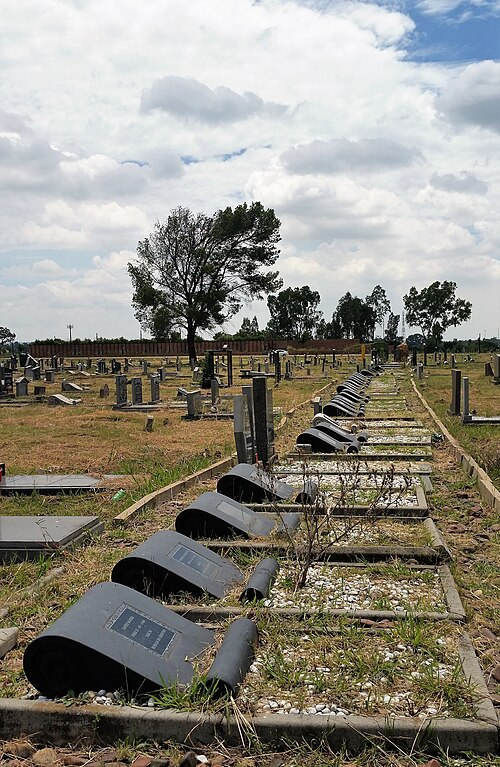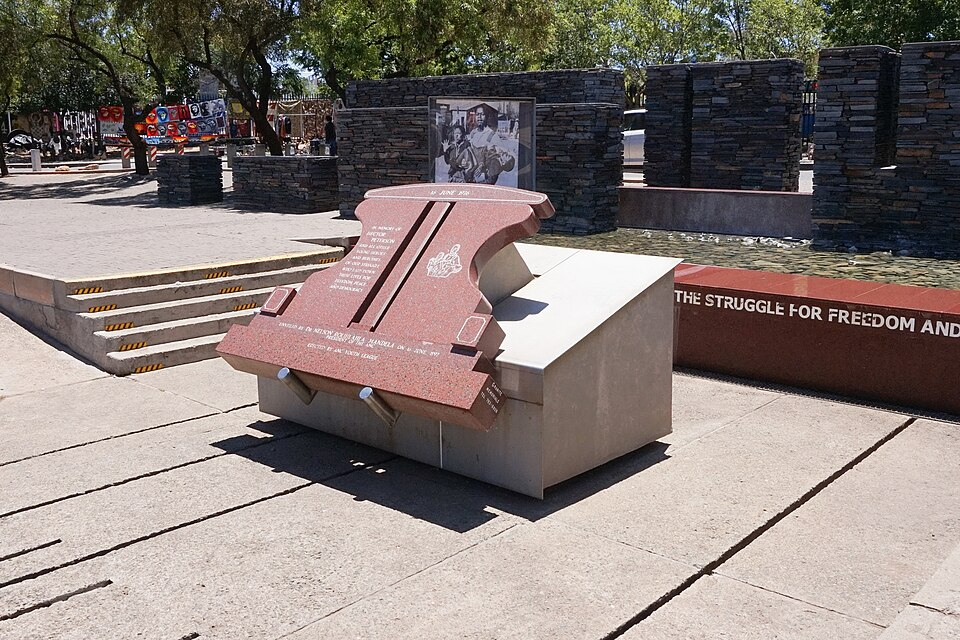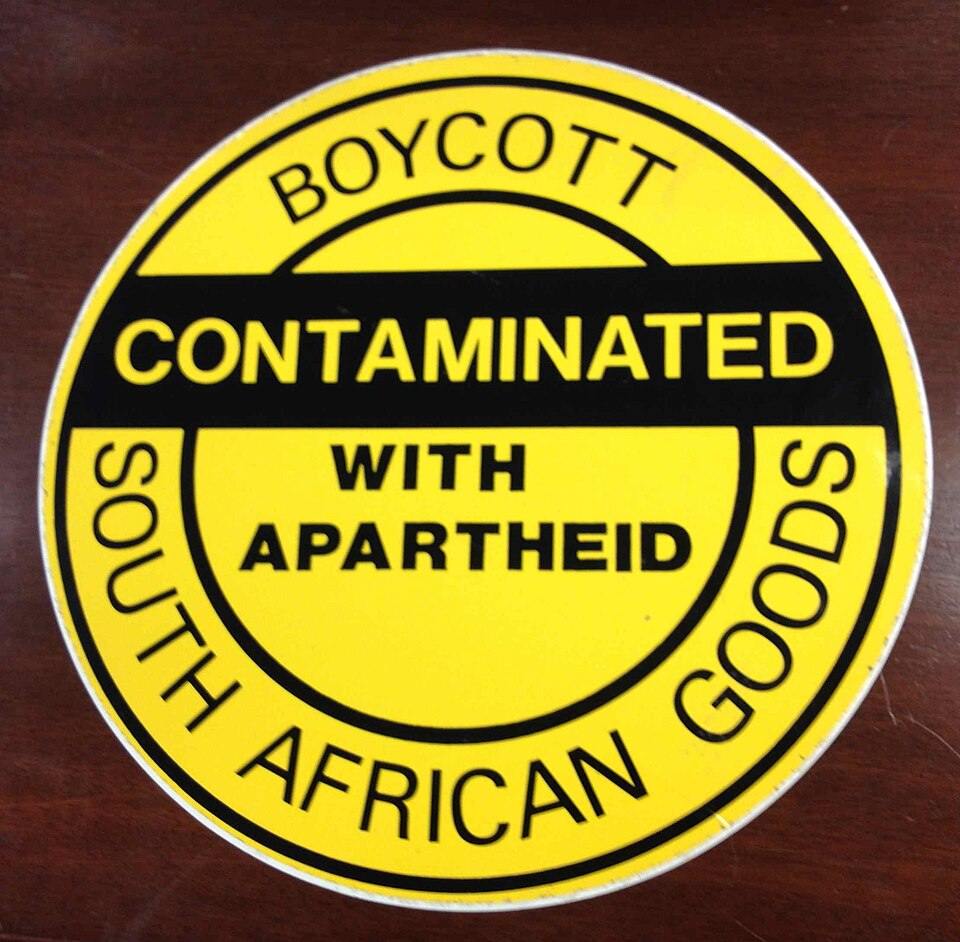IB Syllabus focus:
'Study the resistance to apartheid, including the radicalization of resistance, the role of the African National Congress (ANC), events like Sharpeville and the Soweto massacre, and township unrest in the 1980s.'
The struggle against apartheid in South Africa was marked by a diverse range of strategies, influential figures, and key events that collectively contributed to the dismantling of the system of institutionalised racial segregation and discrimination.
Evolution of the African National Congress (ANC)
Initially, the ANC pursued a path of nonviolent resistance, influenced by the philosophy of Mahatma Gandhi.
Over time, especially after the Sharpeville Massacre, there was a marked shift towards armed resistance.
Leaders like Nelson Mandela and Oliver Tambo became synonymous with this struggle, advocating for both internal and external pressures to challenge apartheid.
The ANC's military wing, Umkhonto we Sizwe (MK), was responsible for sabotage campaigns against government installations.
Radicalisation of Resistance
The failure of peaceful protest to bring about change led to a greater acceptance of militant resistance.
The turn to armed struggle was not unanimous; it caused internal debate within the ANC and other groups about the most effective means to combat apartheid.
Key figures like Chris Hani emerged as representatives of this radical shift, promoting armed struggle as a necessary complement to political action.
Sharpeville Massacre (1960)
Sharpeville became a turning point, highlighting the brutal lengths to which the apartheid regime would go to maintain control.

Graves of the 69 people killed at Sharpeville on 21 March 1960 during an anti-pass protest. The memorial underscores the massacre’s centrality in radicalising resistance and galvanising international censure. Source
The aftermath saw increased repression, including the banning of opposition parties and detention of anti-apartheid leaders.
It also marked a shift in international perspectives, with the UN Security Council for the first time condemning South Africa's actions.
Soweto Uprising (1976)
Sparked by the imposition of Afrikaans as the medium of education, a language associated with the oppressor, the Soweto Uprising involved thousands of black students.
The Uprising saw a brutal response from the police and marked an escalation in the visibility and intensity of resistance to apartheid.

The Hector Pieterson Memorial in Soweto commemorates the students killed during the 1976 uprising against Afrikaans-medium instruction. It symbolises the pivotal role of youth in revitalising resistance and international awareness. Source
It was a clear sign that the younger generation was ready to take a more confrontational stance against the regime.
Township Unrest in the 1980s
Widespread unrest, fuelled by economic decline and political frustration, led to increased confrontations in black townships.
The 1980s saw the emergence of new forms of organisation and protest, including rent boycotts, consumer boycotts, and school boycotts.
The United Democratic Front (UDF) played a crucial role in organising mass protests and advocating for non-racialism.
Role of the ANC in the 1980s
The ANC operated underground and in exile, providing support and direction to internal resistance movements.
It also worked to raise awareness internationally, leading to increased sanctions and pressure on the South African government.
Key international allies, including governments of Scandinavian countries and the Soviet Union, provided crucial support.
Influential Events and Figures
The Vaal Uprising (1984) began as a protest against increased rent and service charges, spreading rapidly to other townships.
Desmond Tutu emerged as a global voice against apartheid, his advocacy earning him the Nobel Peace Prize in 1984.
Winnie Madikizela-Mandela, often referred to as the "Mother of the Nation," was a fiery proponent of resistance, enduring imprisonment and torture for her role.
Black Consciousness Movement and Steve Biko
The Black Consciousness Movement, initiated by Steve Biko, played a significant role in empowering black South Africans and reshaping the discourse around black identity.
Biko's writings and activism laid the groundwork for a psychological liberation that was crucial to the success of the physical struggle against apartheid.
His death in police custody became a symbol of the brutality of the apartheid regime and highlighted the risks faced by anti-apartheid activists.
Women's Role in the Resistance
Women participated in all facets of the resistance, from organising protests to taking up arms.
Figures like Albertina Sisulu and Winnie Madikizela-Mandela provided leadership and became symbols of the strength and resilience of the anti-apartheid movement.
Women's marches and protests often highlighted the specific ways in which apartheid laws affected women, particularly in rural areas.
Cultural Resistance
Artists and musicians played a significant role in the resistance, using their platforms to highlight the injustices of apartheid.
Music by artists like Hugh Masekela and Miriam Makeba became anthems of the struggle, while plays and novels shed light on the apartheid experience.
International artists also boycotted South Africa, refusing to perform in a country segregated by race.
International Opposition to Apartheid
The international community became increasingly critical of apartheid, with institutions like the United Nations imposing sanctions and embargoes.
Activist groups such as the Anti-Apartheid Movement (AAM) in the UK rallied public support for boycotts and pressured governments to take action.
High-profile campaigns, such as the "Free Nelson Mandela" movement, brought the struggle against apartheid into the global consciousness.
Role of Media in Exposing Apartheid
International journalists and photographers played a key role in exposing the realities of life under apartheid.
The global circulation of images like those from Sharpeville and Soweto helped to sway public opinion and increase pressure on the South African government.
State-controlled media within South Africa attempted to censor the extent of resistance and oppression, but foreign correspondents often managed to reveal the truth.
Economic Boycotts and Sanctions
Economic sanctions, including divestments by international companies and academic institutions, intensified the economic strain on South Africa.

Anti-Apartheid Movement consumer-boycott poster used in the 1980s to pressure retailers and governments to isolate apartheid South Africa. Such visual campaigns complemented diplomatic sanctions and helped broaden mass participation in resistance abroad. (Poster design details exceed syllabus depth but clarify the boycott mechanism.) Source
Sporting boycotts, particularly in rugby and cricket, challenged a key aspect of Afrikaner cultural pride and isolated South African teams internationally.
The cumulative effect of these pressures contributed to the eventual negotiation for the end of apartheid, as the economic and political costs became unsustainable for the regime.
The legacy of the anti-apartheid movement is a testament to the power of sustained resistance and international solidarity. It underscores the notion that systemic injustice can be dismantled, but only through collective action, unwavering commitment, and the courage of individuals willing to fight for equality.
FAQ
The apartheid regime employed various strategies to undermine or discredit resistance movements. These included propaganda campaigns that depicted the ANC and other resistance groups as communist pawns and terrorists to dissuade international support. The government also infiltrated opposition groups with informants and used the legal system to criminalise anti-apartheid activities, leading to the imprisonment or execution of activists. Furthermore, the state exerted control over the media, limiting the coverage of protests and resistance activities, and enforcing censorship to manipulate public perception. They also incited violence between different ethnic and political groups within the black community to weaken the unity of the resistance.
Following the banning of the African National Congress (ANC) and the Pan Africanist Congress (PAC) after the Sharpeville Massacre, the nature of resistance shifted in several significant ways. Both organisations were forced to operate underground or in exile, which led to a more militant approach, including the establishment of armed wings like Umkhonto we Sizwe (Spear of the Nation) by the ANC and Poqo by the PAC. These groups conducted sabotage operations against the apartheid regime. Inside South Africa, the struggle also became more fragmented and grassroots-oriented, with community-based organisations and student groups taking a more prominent role in the absence of the national leadership of the banned parties.
The state of emergency declared in the mid-1980s was an attempt by the apartheid regime to quell the growing unrest and was marked by draconian measures that included curfews, bans on protests, and broad powers for police to arrest and detain without trial. While the immediate effect was to suppress resistance activities through intimidation and violence, it ultimately galvanised the movement. International outcry grew as the brutality of the regime was further exposed, leading to increased sanctions and isolation. Domestically, the state of emergency fostered greater unity among resistance groups and catalysed widespread civil disobedience. This relentless pressure created an untenable situation for the government, forcing it to eventually negotiate an end to apartheid.
Education played a central role in the resistance against apartheid, becoming a battleground for control between the government and the black majority. The Bantu Education Act of 1953 was designed to limit black education to skills suitable for their roles in a racially segregated society. The youth, recognising this as a mechanism of control, began to mobilise. The Soweto Uprising of 1976 was directly triggered by the enforcement of Afrikaans as the medium of instruction in schools. Consequently, education became a symbol of resistance as students and teachers alike actively engaged in protests, boycotts, and other forms of resistance, playing a crucial role in keeping the struggle vibrant and relevant.
The apartheid government's response to internal resistance was one of increased repression and violence, characterised by detentions without trial, torture, and the suppression of political opposition. This response shaped the struggle by pushing anti-apartheid groups towards adopting more radical and varied tactics of resistance. The intensification of state violence, especially following events like the Sharpeville Massacre and the Soweto Uprising, led to greater international condemnation and internal unrest. This, in turn, resulted in a more cohesive and strategic resistance movement that sought to combine armed struggle, underground activism, and international advocacy to exert pressure on the apartheid regime.
Practice Questions
The Soweto Uprising was a watershed event in the anti-apartheid struggle, epitomising the defiance of young South Africans against an oppressive system. Its significance lies in its mobilisation of the youth, a previously less active demographic, which sparked a resurgence of resistance across the nation. The brutal crackdown by the government brought condemnation and heightened scrutiny from the international community, further isolating South Africa diplomatically. This event exemplified the regime's vulnerability to internal dissent and external pressure, thereby energising a generation to challenge apartheid more fervently.
The ANC's evolution from a non-violent organisation to one endorsing armed struggle marked a pivotal shift in the fight against apartheid. In the 1960s, following the Sharpeville Massacre, the ANC formed Umkhonto we Sizwe to initiate sabotage against government infrastructure, signalling a readiness to confront the regime's violence. By the 1980s, the ANC, though banned, galvanised international support and intensified its underground operations, making apartheid increasingly untenable. The ANC's evolving strategy, embracing multifaceted resistance, played a central role in undermining and eventually negotiating the end of apartheid.

